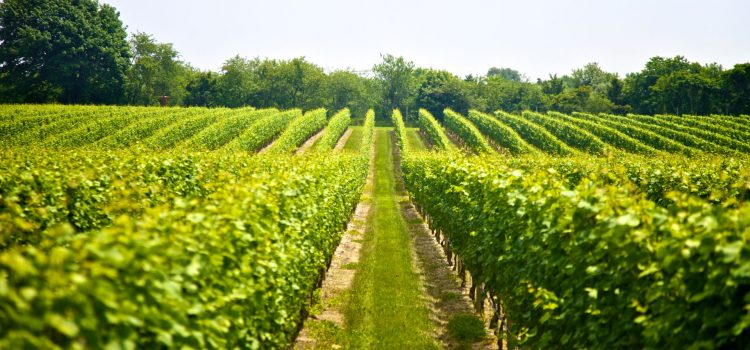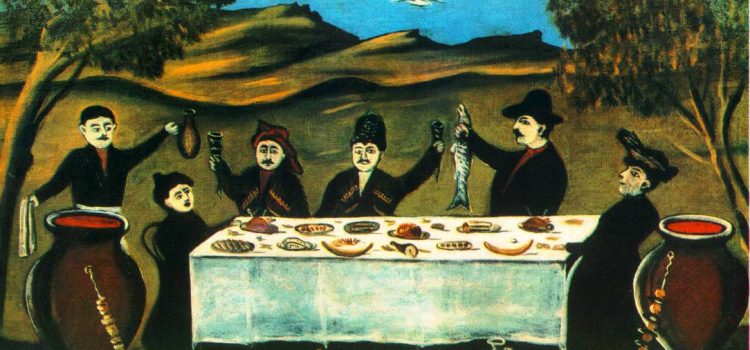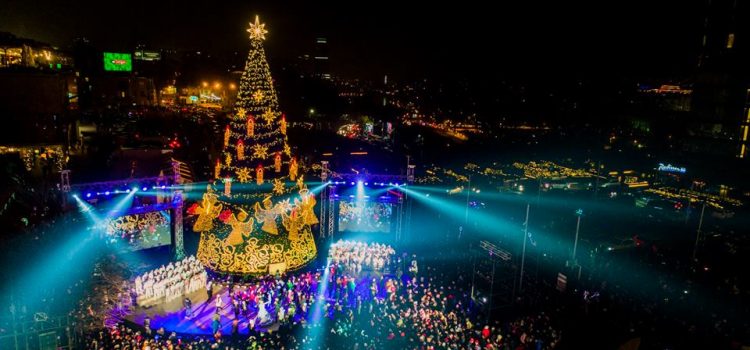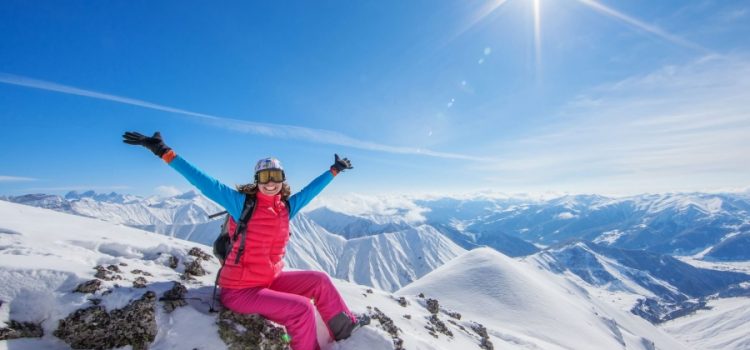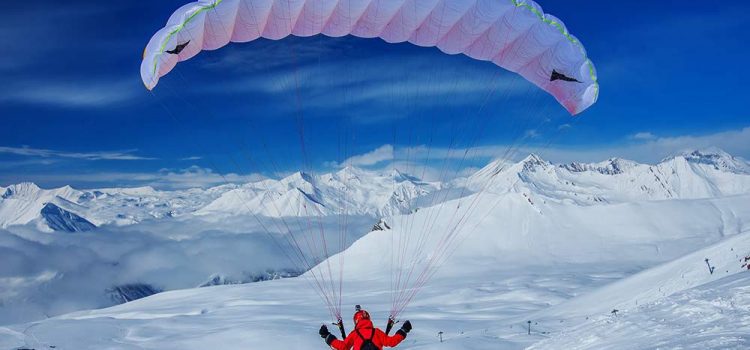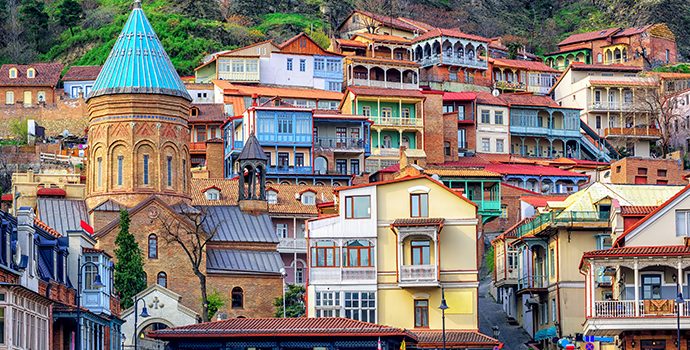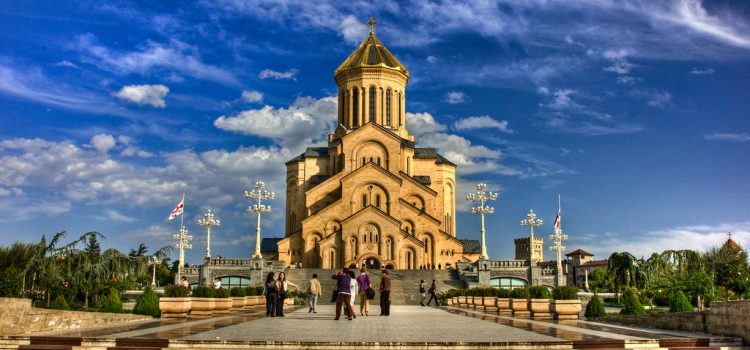Georgia marks national flag day
The current national flag was officially introduced on 14 January 2004.
The flag was used by the Georgian patriotic movement following the country’s independence from the Soviet Union in 1991.
By the late 1990s, the design had become widely known as ‘the Georgian historical national flag’ as vexillologists had pointed out the red-on-white Jerusalem cross shown as the flag of Tbilisi in a 14th-century map by Domenico and Francesco Pizzigano, the 14th century Venetian cartographers.
A majority of Georgians, including the Georgian church, supported the restoration of the flag that took place in 2004.
The winning entry replaced an earlier, three-colour flag first adopted for the 1918-1921 First Democratic Republic of Georgia before it was restored in 1990, ahead of Georgia’s proclamation of independence from the Soviet Union.
Drawn by painter Iakob Nikoladze, the design was selected for the original Republic that became independent from Imperial Russia following the 1917 Russian Revolution.
The State Council of Heraldry called upon Georgian citizens today to set and raise the national flag on their home windows, balconies, fences, roofs and cars to honour Georgian statehood and independence, national and individual freedoms.
Georgian President Salome Zurabishvili hosted a special event at her residency today and stated that the Georgian flag “symbolises the independence of the country, its freedom and everything which is valuable for us”.
The day of the national flag was first marked in 2012.
Source: Agenda.ge
Forbes Features “Unique” Georgian Wines
Forbes published an article this week by contributor Lana Bortolot titled ”Why Georgian wines are Among the Most Unique on the Planet”.
Bortolot is a wine, food, and travel reporter who holds the Advanced Wine & Spirits Education Trust certificate and has covered wine regions in more than 16 countries.
In the article, Bortolot explores Georgian wine culture, the role of wine in modern Georgian society, and the technical side of Georgian wine. The piece is peppered with quotes from Georgian wine lovers:
“Even where we think a culture like France or Italy is so wine-centric, Georgians just take it to a whole different level—much deeper than what we’re exposed,” – Taylor Parsons
“There’s something very particular about how Georgians love wine,” he said. “It’s a little eccentric but then you start looking into it and once you do, you’re truly amazed—it’s such an integral part of the culture and everyday life.” – Noel Brockett
“One of the most important things about Georgian wines is that it’s a window into a culture that most of us as Westerners simply don’t have,” – Simon J. Woolf
Bortolot goes on to focus on orange or amber wines, a style growing in popularity worldwide that has long been part of Georgia’s tradition. She also recounts a legend, which said that, in ancient times, “soldiers wove a piece of grapevine into the chain mail protecting their chests, so when they died in battle, a vine sprouted not just from their bodies, but their hearts.”
The article introduces readers to several Georgian wine makers – locals and expats, high end factories and garage operations – celebrating the varied, inclusive culture of Georgian wine.
The article ends with a wine sampler. Bortolot recommends Kisi, Mtsvane, Rkatsiteli, Saperavi, and Tsinandali for beginners.
By Samantha Guthrie, Source: Georgiatoday.ge
Arles Museum to Host the Exhibition of Niko Pirosmani Paintings
After famous Albertina Museum in Vienna, ‘Niko Pirosmani – A Wanderer between Worlds’ will continue its journey through other European countries.
The next ‘stop’ for the exhibition will be Arles Museum of Modern Art in the South of France. The works of the self-taught primitivist painter, who represents a unique figure of Georgian art will be displayed alongside the paintings of the prominent Dutch impressionist Vincent van Gogh, who lived in Arles for a time.
The exhibition is scheduled for March 2019 and will likely last until summer. It was stated by the Georgian National Museum that negotiations are ongoing about the details of the organization of the exposition. The exhibition is prepared by the Georgian National Museum (GNM) network and the Vincent van Gogh Foundation in Arles.
29 works of Pirsomani, currently being displayed at the Albertina Museum, will be showcased in Arles.
The opportunity to exhibit Pirosmani’s paintings at Albertina is considered an unprecedented success in promoting the country and its culture. General Director of the Georgian National Museum David Lordkipanidze told Imedi TV, the given exhibition had record-breaking viewer numbers.
After Austria, the French audience will also be presented a chance to observe the paintings of Pirosmani and explore the Georgian avant-garde.
By Ketevan Kvaratskheliya, Source: Georgiatoday.ge
Image source: imedinews.ge
Georgian Food Named as Cuisine of the Year by Af&co
Af&Co has named Georgian food as Cuisine of the Year and Khachapuri as its dish of the year in its 2019 Trends Report.
Based in San Francisco, af&co is a leading restaurant and hospitality consulting firm. Their report identifies the hottest key trends in restaurants, food and beverage, and hospitality marketing.
The Ajarian dish Khachapuri has been awarded the title of Dish of the Year thanks to its tasty combination of cheese and egg, and its instagramability. It’s already being served in some restaurants in the US, including Supra in Washington DC, Cheeseboat in Brooklyn and Barbounia in New York.
The Trends Report was the eleventh edition published by af&co. Founder Andrew Freeman noted that “the hospitality industry is leading the charge in creating the world we want to live in. Restaurants and hotels are gathering places for people to connect, creating the perfect grounds for people to come together, get personal, and embrace forward-thinking ideas.”
By Amy Jones, Source: Georgiatoday.ge
Photo source: reddit.com
Tbilisi gets ready to celebrate Christmas and New Year
Winter illuminations for Christmas and New Year are finally installed in Tbilisi, the capital of Georgia. Tbilisi’s main Christmas Tree was officially lit up on the First Republic Square on the 22nd of December. The event was accompanied by Christmas songs and performances. The prime Minister Mamuka Bakhtadze and the Tbilisi Mayor Kakha Kaladze participated in the event and wished the gathered people Happy Christmas and New Year.
Festive decorations were put on Rustaveli, Tamarashvili and Cholokashvili Avenues as well as Kostava,Baratashvili and Melikishvili Streets, which has made night strolls in Tbilisi even more enjoyable.
Winter skiing resort – Gudauri
Gudauri – young and rapid developing winter sports resort located at Kazbegi region of Georgia, 120 km from Tbilisi, at the height of 2,196 m (about 7,200 feet) near the Cross Pass. Skiing season lasts from December to April, comfort skiing on all routes. In May skiing is possible on the five (highest) lift or even on the second lift in snow years.
Routes and lifts: in Season 2018-2019 is going to be open a new Ski-Lift to Kobi.
- “Pirveli” 1992-2065m- 3 seats (со снежными пушками и вечером освещена),
- “Soliko” 2157-2709m- 3 seats,
- “Kudebi” 2703-3006m – 3 seats, (на вершину Кудеби)
- “Snow Park”- 3 seats, 2720-2846m
- “Sadzele”- 4 seats, 2795-3276m, (to Sadzele).
- gondola “GudAura” – 2724-2777m, 10 seats,
- “Shino”-, 6 seats, 2186-2724m
- “Zuma” – 2151-2210m
- Alpina: 2300-2320m
- Bombora: 2740-2780m
- Baby
Snow park and SunKid people mover – 300m – FREE.
Cable railway operates from 10 to 16 for any number of skiers on routes. Cable railway may be closed in rare occasions of very low visibility or high wind. Cable railway is equipped with standby power generator for blackout protection.
SUMMER SEASON: From 16th of July during the summer season all the ski lifts will be working every day from 10:00 till 16:00. Price List:
One Ride – 5 Gel Sadzele (Gudaura, Snow Park, Sadzele) – 15 Gel Bike Pass (One day) – 12 Gel Summer Card – 60 Gel 20% discount on any category tickets for groups of 10-20 persons, 30% discount on any category tickets for groups of 20 people and more.
source: www.Gudauri.info
Bakuriani – Skiing resort in Georgia
Bakuriani is known for days with long sunshine, for 2052 hours a year and long snowy winter from December to March. Winters are cold and experience sufficient snowfall while summers are long. Average January temperature is – 7 and in August +15 degrees by Celsius. Average snow cover makes 64 cm.
Cristal clean air of high mountains, predominantly coniferous (mainly made up of spruce) forest filled with the perfume of beech trees, Kokhtagora, Kokhtagora II and views of mountains of Tskhratskaro attract attention of visitors during all seasons of the year.
No wonder that Bakuriani is one of the most famous mountain resorts among Georgian international ski resorts. Its climate and relief is ideal for the development of varieties of winter sports. First skiers were fixed here in 1932.
During winter seasons families with kids and fans of skiing adults equally enjoy staying here. Cable ways can be found in several places, on the Kokhtagora mount (1.3 km), Kokhtagora II, Sakhvelo mount (3.8km), under 90 and 25 m. ski jumps and there are also places for tobogganing in the park. The Kokhtagora along with other ski runs is one of the best difficult skiing runs for professional skiers.
Bakuriani is a mountain-climate resort with its main curative factors: mountain air, long time sunshine, high activity of ultraviolet rays. One can be cured here from lymphadenitis, chronic non-tuberculosis illnesses of respiratory tract and anemia. One can visit High-Mountain Botanical Gardens, the branch of the Tbilisi Botanical Institute (founded in 1919) with the best collection of alpine flora in Europe.
5 Things Not to Miss:
1. Snowmobile sightseeing
2. Sledges and horse riding
3. Parks for kids
4. Panoramic views
5. Après ski
Source: Skigeorgia.ge
Paragliding in Gudauri
Having decided to jump you will be able to sail above the earth and see its true beauty, because nothing can escape from your sight. Paragliding can really give you the feelings, emotions and experiences, which nothing can be compare with!
Paragliding in Gudauri takes place in winter and summer, in the case of good weather.
We offer our guests the slopes of the mountains Kudebi and Sadzele. All flights are carried out in tandem system: instructor and passenger.
Pilot-instructors of a company use brand new, certified paragliding equipment. They have minimum 10 years of experience.
About prices and additional information please write us: Georgiantour@georgiantour.ge , Georgian_tour@yahoo.com
10 things to do in Tbilisi
What is it about Georgia lately? The country (not the US state) seems primed to be one of the hottest tourist destinations for 2017, as travellers are freshly obsessed with the fashion, the mountain trekking, the architecture, and the good eats. The best news for those travelling from the UK? Georgian Airways launched direct flights from Gatwick to Tbilisi over the weekend; next month, Wizz Air will start a route to Kutaisi from Luton. Want to see what all the fuss is about? Here are our top 10 tips for what to do in Tbilisi.
Browse Soviet relics
From 1921 to 1991 Georgia was part of the Soviet Union. This history is evident everywhere, but most in your face while walking through the Dry Bridge Flea Market near Dedaena Park. Locals who lived the bulk of their lives under Soviet rule spread blankets on the ground and lay out goods they’ve saved from the scrap heap. The range of items is boggling; it’s priceless antiques next to plumbing fixtures, next to tarnished military medals and handmade crafts. Be prepared to bargain, and to receive a history lesson with each purchase.
Learn the etiquette of “khinkali” dumplings
Georgian dumplings are plump, round pouches filled with minced meat, chopped onion and spices. Pinched closed, you then flip the dumpling over and gingerly bite into its skin, sucking out the hot soup inside before going in for whole bites. Don’t eat the pinched bit; it’s not always cooked through and is used for staff to later count how many were eaten. Khinkali are omnipresent on menus in Tbilisi, but head to Barbarestan on Aghmashenebeli Avenue to try them alongside other Georgian dishes, their recipes straight from Barbare Jorjadze, a 19th-century princess and renowned cook who is generally accepted to have been Georgia’s first feminist.
Strip down and suds up
The ancient district of Abanotubani in Tbilisi’s old quarter is home to several equally ancient sulphur bathhouses. Head underground through brick entrances to pay an attendant for towel and sandal rental, and your choice of communal shower (separate for male and female) or private room with soaking tubs. Add on an exfoliating scrub-down and soapy foam massage for a few pounds more, but be warned that complete nudity is the rule. At the simply named Bathhouse Number 5, exquisite mosaics decorate the domed rooms, making up for the faintly eggy smell of the sulphur water.
Party at Fabrika
An old sewing factory turned hostel sounds like a stereotypical hipster hangout, and that’s totally true in Tbilisi. Fabrika offers communal, hostel-style rooms from as low as £10 per person, and private ensuite rooms for two are from £38 per night, but guests should be warned that the party in the public areas often lasts well into the night. The lobby bar Cocktails and Dreams, the courtyard strung with fairy lights, and the co-working spaces and artisan shops that make up the complex draw locals as well as visitors; you’ll make friends fast here.
Take in some culture
Tbilisi is no backwater destination; the spectacular Zurab Tsereteli Museum of Modern Art plays host to a biannual Fashion Week, the stunning architecture of the modern Peace Bridge lights up the riverfront at night, and the oddity of the 2011-constructed “Leaning Tower of Tbilisi” (aka the Gabriadze Clock) provides plenty of opportunities for Instagramming.
Eat a cheese-stuffed bread boat
Better known as “Acharuli Khachapuri”, this traditional Georgian comfort food is a gluten-free traveller’s nightmare, but heaven to most. The boat-shaped flatbread arrives fresh from the wood oven to the table, its centre bubbling with melted cheese, a runny egg, and a generous pat of butter. Even a small order is enough for two people, especially with a side of khinkali.
Yes, Georgian wine is fabulous. Red or white, dry or sweet, it’s all extraordinarily drinkable thanks to the fertile environment of the lower Caucasus, one of the most ancient viticulture regions in the world. But branch out beyond the wine for chacha (ჭაჭა), which is no dance in Georgia. Chacha technically refers to any fruit-based liquor, but it’s come to be most synonymous with grape brandy, produced from the leftovers during winemaking. It’s clear and strong, and most similar to Italian grappa. Stop into the parlour-style Books Cafe on Tsinamdzghvrishvili Street (yes, Georgian street names are epic) for a thimble full of chacha, a game of backgammon, and a browse of their used books for sale.
For something a little less strong, hit up a Georgian soda fountain for “Lagidze waters,” cool and sparkling concoctions of flavoured syrup mixed with mineral water. Invented by pharmacist apprentice Mitrofan Lagidze in the late 1800s, the drinks are cheap, fast, and refreshing. The most popular varieties of lemon, grape, cherry, and even chocolate, are poured and mixed from traditional dispensers at places like Acharulebi Lagidzeze and the aptly named Lagidze Water at Sameba Cathedral. Point to the bright green syrup to try Tarkhun, or tarragon soda, a flavour embraced by the Soviets and now produced and available bottled in supermarkets as “Тархун.”
Get high
Tbilisi sits in a valley, cut through by the Mtkvari River and backed by small mountains. Heading up Mount Mtatsminda to reach a small amusement park and the best view over the city is easy via modern funicular. There’s also the option to visit the Narikala Fortress via cable car from Rike Park, which comes with the bonus of gliding right over the twisting streets of Tbilisi’s old quarter before arriving to the medieval ramparts of the fort.
Make a salad
According to Megan Starr, a travel blogger who regularly visits countries of the former USSR, Tbilisi is the perfect destination for salad lovers. If there’s one dish ideal for summer, it’s the simple and filling Georgian Salad. Quarters of ripe, juicy tomatoes fill a bowl with slices of onion, cucumber and green pepper. It’s finished with a palmful of walnuts, a dusting of pepper, and a drizzle of olive oil. Get it at Linville, a cosy and antique-filled first-floor cafe near Freedom Square, where the salad is terrifically refreshing on a humid day, and even better with a glass of crisp white Georgian wine.
Get out of town
Technically this list is what to do in Tbilisi and can be rushed into a long weekend. If you have more time, use the trip as a two-for-one, adding exploration of Kutaisi, Kazbegi or Batumi to your plans. Kutaisi is a pedestrian-friendly city of streets lined with gardens, theatres, and several medieval church and monastery UNESCO World Heritage sites. The frontier mountain town of Kazbegi, also called Stepantsminda, is for hikers and, in the winter, for skiers. The Georgia-based luxe hotel group Rooms Hotels recently opened a “retro-Soviet meets industrial chic” property in the town.
Source: Independent.co.uk
Holy Trinity Cathedral of Tbilisi
The Holy Trinity Cathedral of Tbilisi commonly known as Sameba is the main cathedral of the Georgian orthodox church, located in Tbilisi, the capital of Georgia. Constructed between 1995 and 2004, it is the third tallest Eastern Orthodox cathedral in the world and one of the largest religious building in the world by total area. Sameba is a synthesis of traditional styles dominating the Georgian church architecture at various stages in history and has some Byzantine undertones.
The idea to build a new cathedral to commemorate 1,500 years of autocephaly of the Georgian Orthodox Church and 2,000 years from the birth of Jesus merged as early as 1989, a crucial year for the national awakening of the then Soviet republic of Georgia. In May 1989, the Georgian Orthodox Patriarchate and the authorities of Tbilisi announced an international contest for the “Holy Trinity Cathedral” project. No winner was chosen at the first round of the contest when more than a hundred projects were submitted. Finally the design by architect Archil Mindiashvili won. The subsequent turbulent years of civil unrest in Georgia deferred this grandiose plan for six years, and it was not until November 23, 1995, that the foundation of the new cathedral was laid.
The construction of the church was proclaimed as a “symbol of the Georgian national and spiritual revival” and was sponsored mostly by anonymous donations from several businessmen and common citizens. On November 23, 2004, on St. George’s Day, the cathedral was consecrated by Catholicos Patriarch of Georgia Ilia || and high-ranking representatives of fellow Orthodox Churches of the world. The ceremony was also attended by leaders of other religious and confessional communities in Georgia as well as by political leaders.
The Sameba Cathedral is erected on the Elia Hill, which rises above the left bank of the Mtkvari river in the historic neighborhood of Avlabari in Old Tbilisi.
Source: Wikipedia.com


